 While approving photographic sets, we ran into a week of Mr. Xiong Jun called ‘traditional opera actor,’ that took us behind the scenes of Chinese opera. His photographs of the opera actors during preparation before entering the stage left us fascinated and completely in awe, as we were able to experience an unknown world only a chosen few can normally enter. The photographs left us wanting to know more about this type of art and due to the language barrier between us and Mr. Xiong Jun, we decided to explore this world, find further information ourselves and finally share it with you in the form of reportage. We thank Mr. Xiong Jun for such inspiration and fascinating photographs.
While approving photographic sets, we ran into a week of Mr. Xiong Jun called ‘traditional opera actor,’ that took us behind the scenes of Chinese opera. His photographs of the opera actors during preparation before entering the stage left us fascinated and completely in awe, as we were able to experience an unknown world only a chosen few can normally enter. The photographs left us wanting to know more about this type of art and due to the language barrier between us and Mr. Xiong Jun, we decided to explore this world, find further information ourselves and finally share it with you in the form of reportage. We thank Mr. Xiong Jun for such inspiration and fascinating photographs.
„1 minute on stage equals 10 years behind the scenes.“
Even though opera as art is mainly considered as part of western civilization, a longstanding tradition can be found in the history of the eastern continent as well, specifically in China.
 This country can be proud of its more than three hundred types of traditional Chinese theatre: Kunqu, Xiang Ju, Beijing opera, Shaoxing opera, Henan, Pu Ju, Sichuan opera, Tibet opera, pantomime, Marionette Theater, two man shows, and so on. Beijing opera („ťing-tü“ or „ťing-si“) is the most famous and, compared to local Chinese operas that are usually performed in the local dialect, uses the national dialect and is surely the most sought out form of opera in the country.
This country can be proud of its more than three hundred types of traditional Chinese theatre: Kunqu, Xiang Ju, Beijing opera, Shaoxing opera, Henan, Pu Ju, Sichuan opera, Tibet opera, pantomime, Marionette Theater, two man shows, and so on. Beijing opera („ťing-tü“ or „ťing-si“) is the most famous and, compared to local Chinese operas that are usually performed in the local dialect, uses the national dialect and is surely the most sought out form of opera in the country.
Beijing opera differs from the classical European in many different aspects, one being it’s dramatically higher mental demand which is complemented by an equally difficult physical aspect. No wonder actors prepare for such tough moments from a tender age. Beijing opera combines singing, dancing, pantomime and martial arts; it is claimed that one minute on stage equals ten years behind the scenes.
Two hundred years worth of history is carved into the Beijing opera but it wouldn’t exist without the initial wishes of the imperial palace in the Xuanwu district, under the rule of the Qing dynasty, which requested the presence of four opera choirs from the Anhui province. Thanks to this public success, the choirs remained in the imperial court. They looked for inspiration from operas from Kunqu, Yiyang, Hanju and Luantan and during half a century of combining and adding elements of these operas, the Beijing Opera developed and came into being.
As previously mentioned, Beijing opera is the most popular in China and the richest in actors, spectators and repertoire.
„Every pattern and color reflects the nature of a given character and the whole spectrum of human emotions.“
One of the main and perhaps most important elements of Beijing opera, and Chinese opera altogether, is make-up. This art tends to be very expressive and full of designs and all sorts of patterns. Its importance lies in the fact that every pattern and color reflects the nature of a given character and the whole spectrum of human emotions. Red for instance represents loyalty to the royal court and nobility and that is why it is often used with generals. Black stands for honesty and rightness while white, on the other hand, describes cunning and falsity.
 The spreading of colors alone is based on four methods – rubbing, sketching, overlap and completion. Rubbing comes first; color is spread by fingers across the whole face with emphasis on the eyebrows, eyes and veins. Then, with the help of a brush, a sketch of the basic facial pattern is made with greased-up color. The next step consists of the face being covered with a layer of white, again with the use of a brush, focusing on the forehead and eyebrows. Completion comes as a last phase during which non-symmetric patterns are colored in. Based on artistic intent, either all four methods are used, or at times, one or two of the methods are left out. Using silver and gold for instance signals the presence of an immortal or supernatural being.
The spreading of colors alone is based on four methods – rubbing, sketching, overlap and completion. Rubbing comes first; color is spread by fingers across the whole face with emphasis on the eyebrows, eyes and veins. Then, with the help of a brush, a sketch of the basic facial pattern is made with greased-up color. The next step consists of the face being covered with a layer of white, again with the use of a brush, focusing on the forehead and eyebrows. Completion comes as a last phase during which non-symmetric patterns are colored in. Based on artistic intent, either all four methods are used, or at times, one or two of the methods are left out. Using silver and gold for instance signals the presence of an immortal or supernatural being.
Over a period of time, Beijing opera gave birth to 6 basic types of characters – an elderly man (lao-sheng), a younger man (siao-sheng), a woman (tan), an old lady (lao-tan), a painted face (ťing) and a clown (chou). In order to visualize how such characters receive their make-up, let us depict the process of for example a woman and the elderly man. A woman represents middle-aged and young females. The make-up of the actors has multiple layers; cheeks are painted red to evoke contrast with white powder on the forehead, nose and jaws. Eyes and eye-brows are emphasized and the lips glare with an expressive red. As for the elderly man, this character represents middle-aged males. The make-up is softer and, according to age, black, grey or white is added to the color of facial hair. In addition, a not so expressive and decent costume is used.
Mei Lanfang is regarded as one of the most significant and outstanding actors of Beijing opera. He started studying opera when he was eight and at an early age of eleven, he was already present on stage. He is the most famous impersonator of female roles in the 20th century and is acknowledged and praised for promoting Beijing opera in Japan, the United States and Russia.
„A glimpse of hope for tradition has appeared in the form of Li Yu Gang, a young man whose life story is close to a fairy tale.“
 In recent years, the era of men playing all roles including female ones is almost over. The Era of Mei Lanfang is slowly fading away and female roles are frequently assumed by women. However, a glimpse of hope for tradition has appeared in the form of Li Yu Gang, a young man whose life story is close to a fairy tale. Despite his talent being obvious from his early years, poverty and his family situation prevented him from studying, so he was forced to travel to the capital city of Jilin province and earn a living as a waiter in a nightclub. One day an accident, in the form of a female singer being sick, changed his life. Li Yu Gang offered to step in and finish the show instead of the ill actress. He was a huge success, basically stunning the audience, which broke out into long-lasting applause. His enormous talent was soon know throughout the land, and he was finally able to live his dream and start studying Beijing opera, specializing in female roles. The tradition of the opera is therefore kept alive for some time; however, the desire of the young generation in China to undergo the hardship of studying is quickly diminishing.
In recent years, the era of men playing all roles including female ones is almost over. The Era of Mei Lanfang is slowly fading away and female roles are frequently assumed by women. However, a glimpse of hope for tradition has appeared in the form of Li Yu Gang, a young man whose life story is close to a fairy tale. Despite his talent being obvious from his early years, poverty and his family situation prevented him from studying, so he was forced to travel to the capital city of Jilin province and earn a living as a waiter in a nightclub. One day an accident, in the form of a female singer being sick, changed his life. Li Yu Gang offered to step in and finish the show instead of the ill actress. He was a huge success, basically stunning the audience, which broke out into long-lasting applause. His enormous talent was soon know throughout the land, and he was finally able to live his dream and start studying Beijing opera, specializing in female roles. The tradition of the opera is therefore kept alive for some time; however, the desire of the young generation in China to undergo the hardship of studying is quickly diminishing.
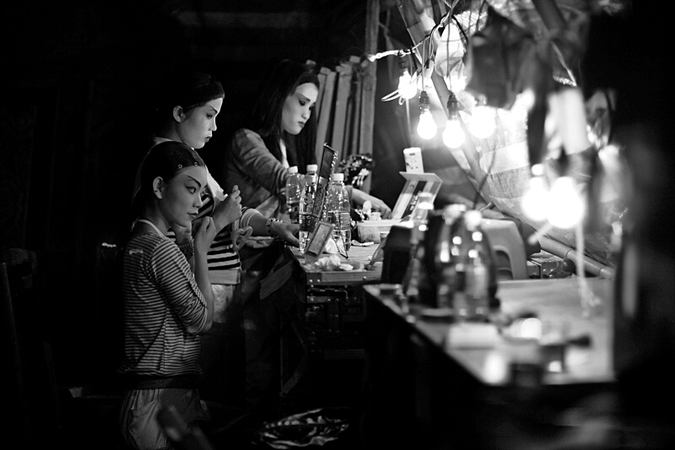 |
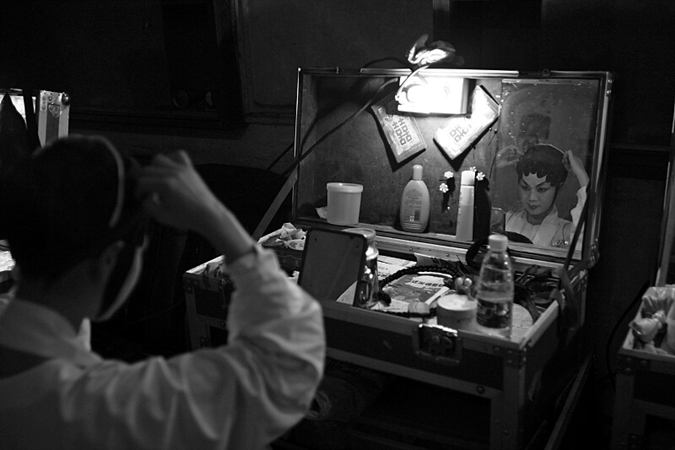 |
 |
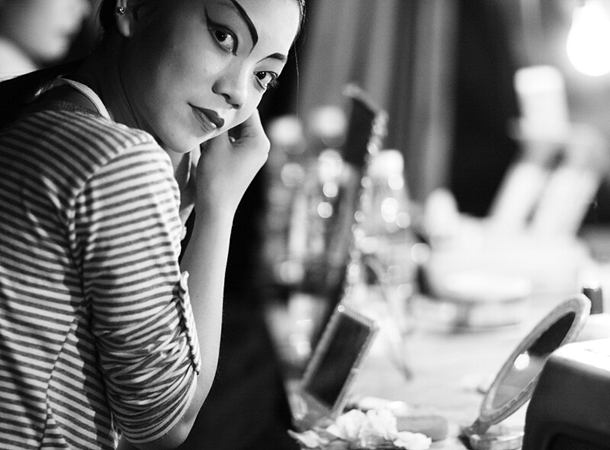 |
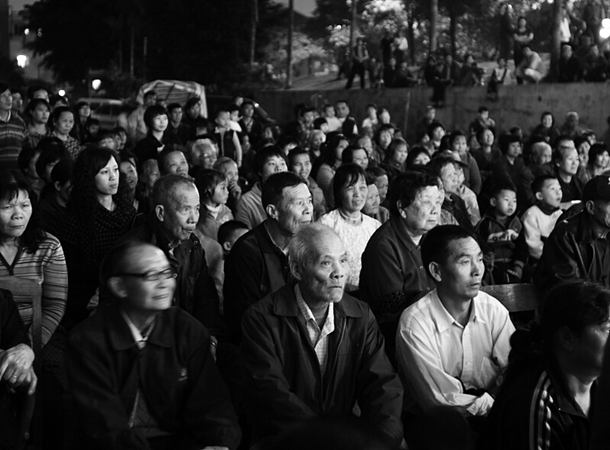 |
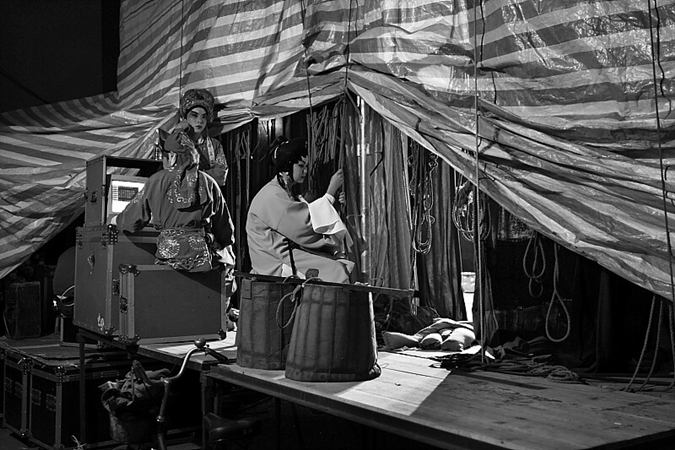 |
